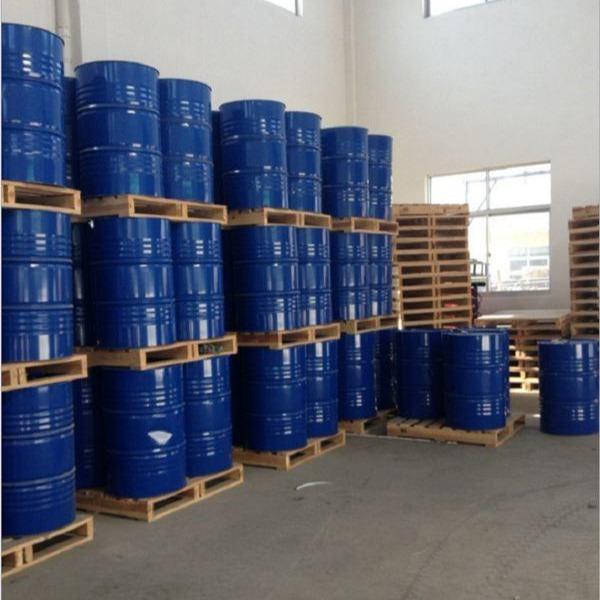-

Poly(vinyl alcohol)
Polyvinyl alcohol, an organic compound, is a white flake, flocculent or powdery solid, odorless. It is soluble in water, insoluble in gasoline, kerosene, vegetable oil, benzene, toluene, ethylene dichloride, carbon tetrachloride, acetone, ethyl acetate, methanol, ethylene glycol, etc. It is slightly soluble in dimethyl sulfoxide. Polyvinyl alcohol is an important chemical raw material, used to make polyvinyl acetal, gasoline-resistant pipes and vinylon synthetic fibers, fabric treatment agent...Read more -

Vinyl acetate
Chemical properties: Colorless flammable liquid with a sweet ether aroma. It is miscible with ethanol, soluble in organic solvents such as ether, acetone, chloroform, carbon tetrachloride, and insoluble in water. Uses: 1. Vinyl acetate is the main raw material for the manufacture of synthetic fiber vinylon. Vinyl acetate is polymerized by itself or copolymerized with sub-monomers to obtain polyvinyl alcohol, vinyl acetate-ethylene copolymer (EVA), vinyl acetate-vinyl chloride copolymer (EVC),...Read more -

Chloroacetic acid
Chloroacetic acid is an important organic chemical product, mainly used in the production of fine chemicals such as medicines, pesticides, dyes, and fragrances. It can be prepared through different synthetic routes, including sulfuric acid-catalyzed routes and sulfur-catalyzed routes. The market demand for chloroacetic acid is closely related to the application of its downstream products. With the continuous development of the fine chemical industry, the demand for chloroacetic acid is also g...Read more -

DL-sec-Butyl acetate
Sec-butyl acetate, also known as sec-butyl acetate, is a colorless, flammable liquid with a fruity aroma. Sec-butyl acetate has many uses, including fragrance, medicine, solvent, metal cleaning agent, reaction medium and extraction agent. In recent years, due to the increasingly stringent requirements for environmental protection worldwide, people tend to reduce the use of solvents such as toluene, xylene, and ketones. The development direction is to develop and utilize resin coatings and rep...Read more -

Butyl acetate
Butyl acetate is a carboxylic acid ester synthetic fragrance, also known as butyl acetate. It is a colorless transparent liquid with a strong fruity aroma. It can be mixed with ethanol and ether at will, can be dissolved in most organic solvents, and is slightly soluble in water. The solubility in water is 0.05g. Its vapor has a weak anesthetic effect, and the allowable concentration in the air is 0.2g/l. This product has a strong fruity aroma. After dilution, it has a pleasant pineapple and ...Read more -

Acrylonitrile
Chemical properties: Colorless, volatile, transparent liquid with sweet taste and slight odor. Soluble in organic solvents such as acetone, benzene, carbon tetrachloride, ether, ethanol, etc. Slightly soluble in water. Uses: Used in the synthesis of polyacrylonitrile, nylon 66, nitrile rubber, ABS resin, polyacrylamide, acrylic esters, etc., and also used as grain fumigants. Uses: 1. Acrylonitrile is an intermediate for fungicides bromothionil and propamocarb, insecticides chlorpyrifos and di...Read more -

PTA
Chemical properties: Phosphotungstic acid is composed of four elements: phosphorus, tungsten, hydrogen, and oxygen. It is a typical compound of transition metal tungsten, and its appearance is white or slightly green crystals. It is easy to deliquesce. It is stable in acid solution and decomposes into phosphate and tungstate when azeotropic with alkali. The water content is generally between 9 and 17 molecules. It is non-toxic, non-flammable, has a certain irritation, can be dissolved in alco...Read more -

Butyl methacrylate
Chemical properties: Colorless liquid. Soluble in ethanol and ether, insoluble in water. Uses: 1. Used as a monomer for polymers, used in the production of modified organic glass, transparent film, and the manufacture of finishing agents and polishes for paper, fabrics, leather, etc., and used as a solvent for coatings. Used in the synthesis of plastics and organic matter to prepare monomers for polymers or copolymers. Used in organic glass modification, and can be used as a finishing agent, ...Read more -

Methacrylic acid
Chemical properties: It is a colorless and transparent liquid at room temperature. It is easily soluble in hot water, ethanol and most organic solvents. Uses: 1. Used to make coatings, insulating materials, adhesives and ion exchange resins 2. Important organic chemical raw materials and polymer intermediates. Its most important derivative product, methyl methacrylate, produces organic glass that can be used for windows in aircraft and civil buildings, and can also be processed into buttons, ...Read more -
Acrylic Emulsion
Polyacrylic acid copolymer emulsion. It is generally made by copolymerizing acrylic acid low ester organic substances such as methyl acrylate as the main monomer with acrylonitrile, styrene, dibutyl maleate, methacrylate, vinyl chloride, vinylidene chloride or vinyl acetate. Sometimes, in order to give the polymer emulsion some special properties, functional monomers are introduced, such as (meth) acrylic acid, maleic acid, fumaric acid, (meth) acrylamide, etc.Read more -

Acrylic Resin
Acrylic resin (MethylMethacrylateResin), commonly known as organic glass, is a polymer compound made from methyl methacrylate. Commonly used synthesis methods include anionic polymerization, solution polymerization, bulk polymerization, and suspension polymerization. In addition, the resin has excellent properties such as easy coloring, light weight, not easy to break, and good processing performance. Therefore, it is often used as a substitute for glass, optical lenses, lenses, etc. In addit...Read more -

MMA
Polymethacrylate, full name polymethyl methacrylate (PMMA), is an important optically transparent plastic with the advantages of high transparency, good impact resistance, light weight, low price, environmental protection and non-toxicity. It is a widely used glass substitute. The biggest feature of PMMM is its excellent optical properties, which is also the origin of its common name “plexiglass”. Mainly because it is an amorphous polymer with uniform texture, its internal molecul...Read more





